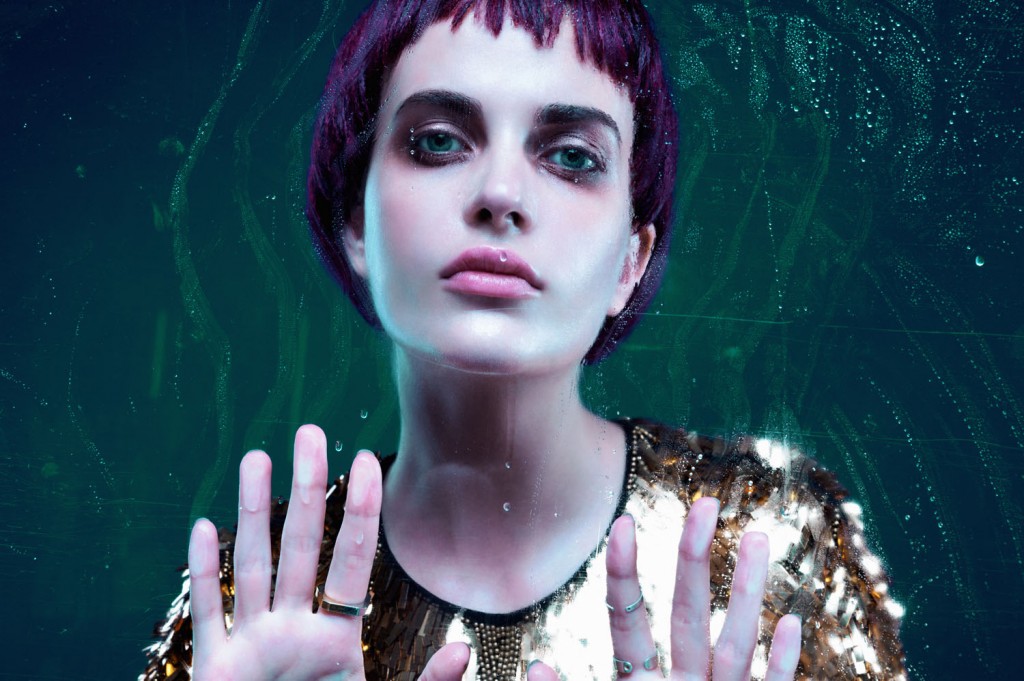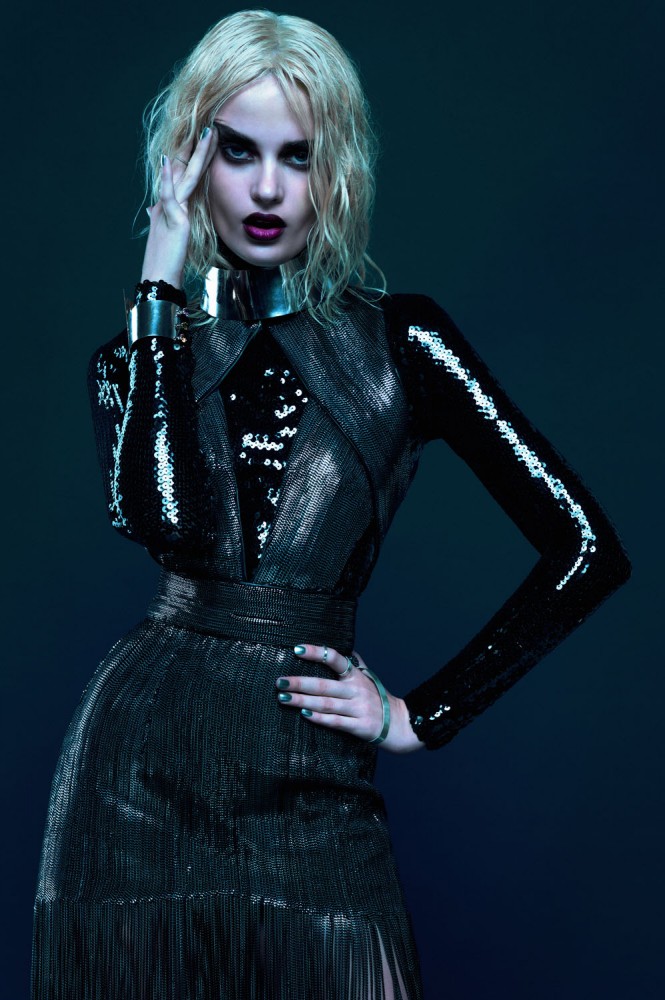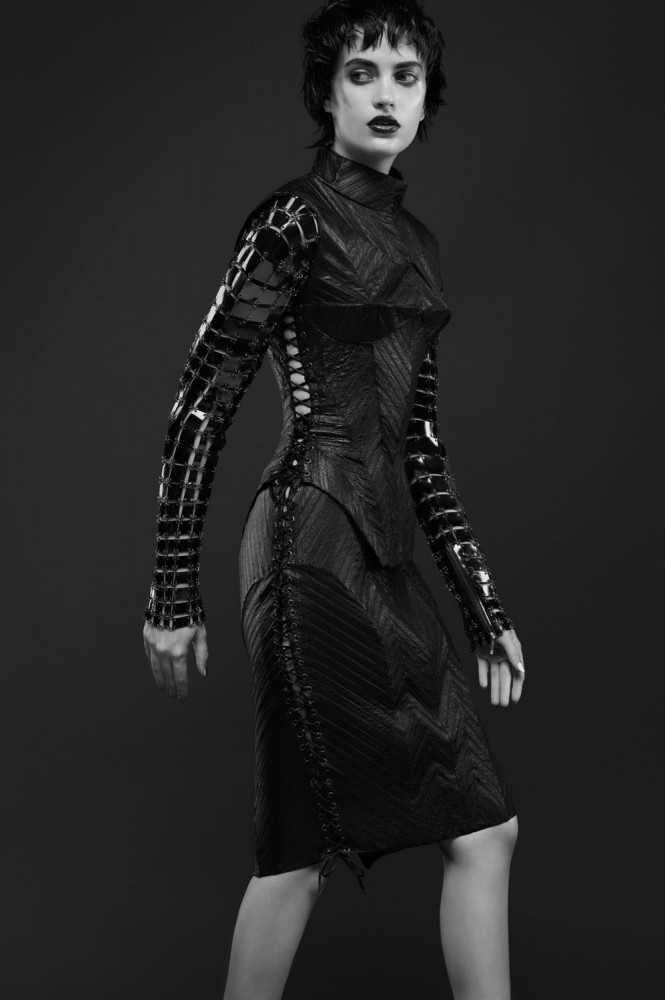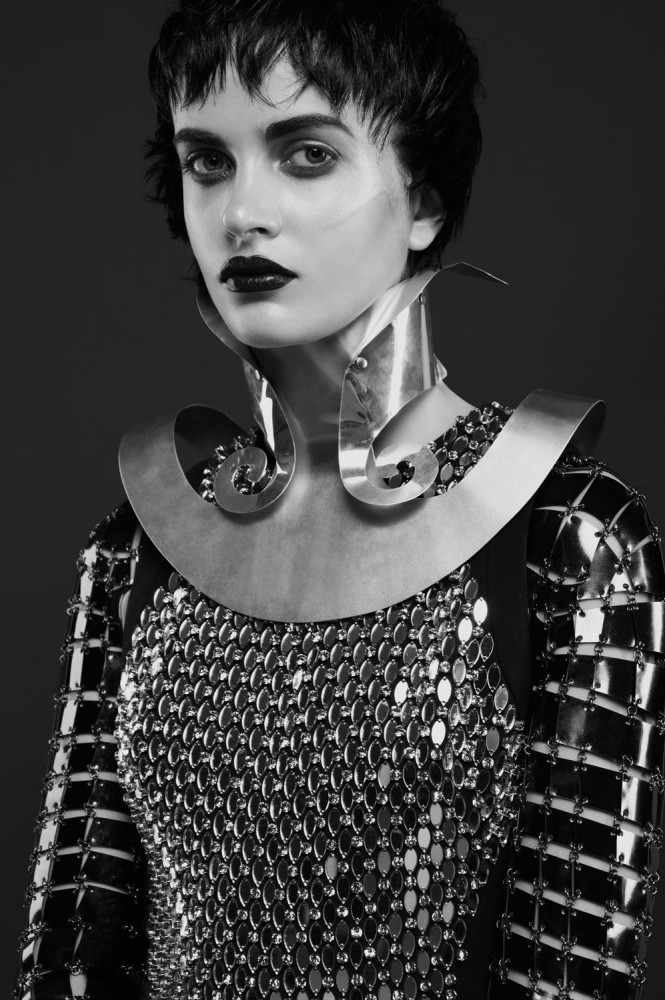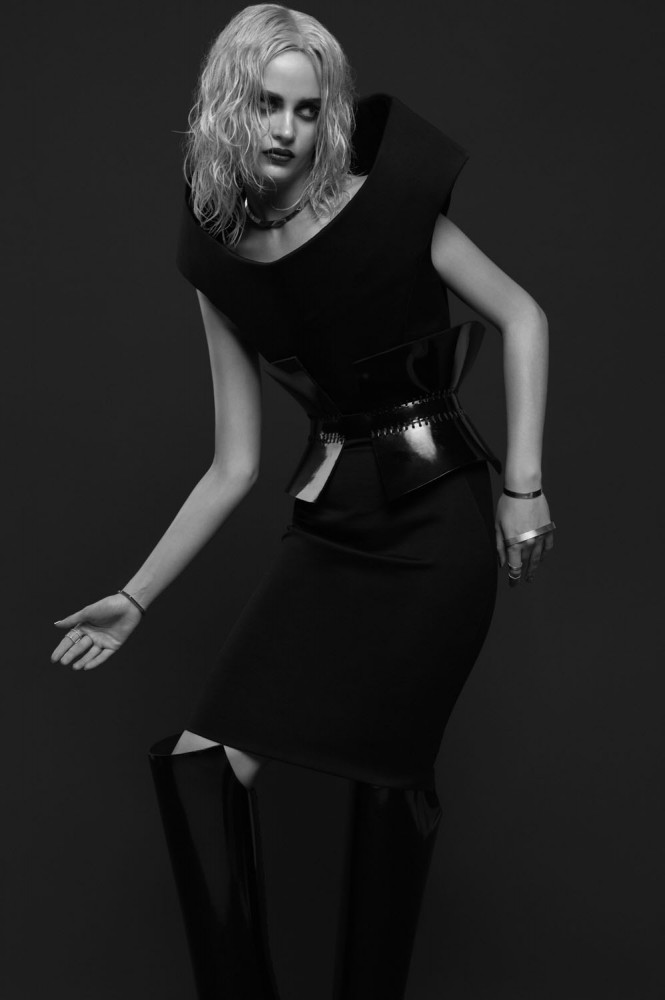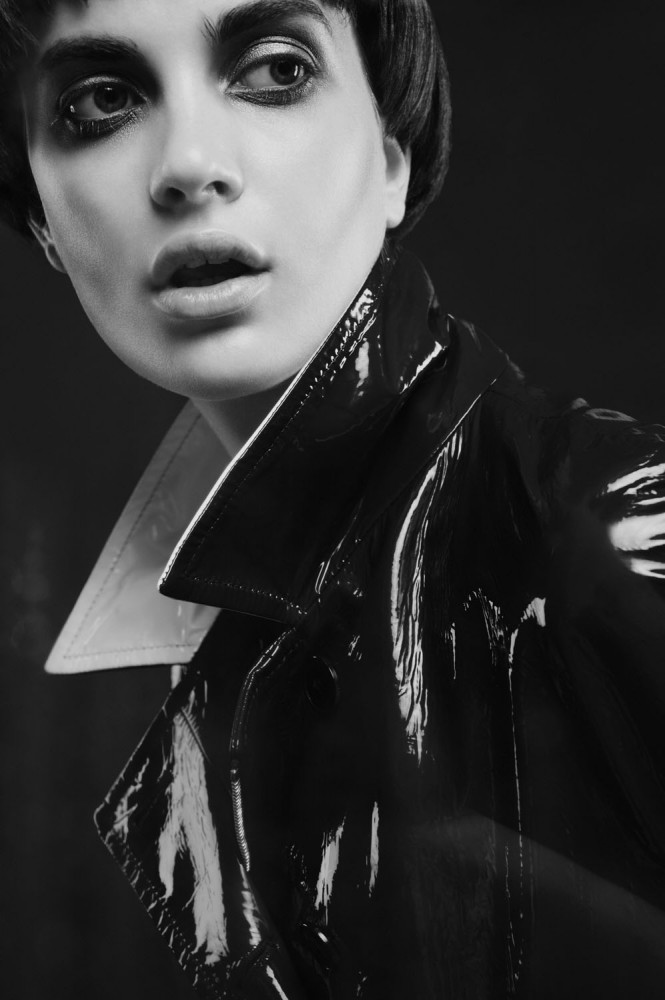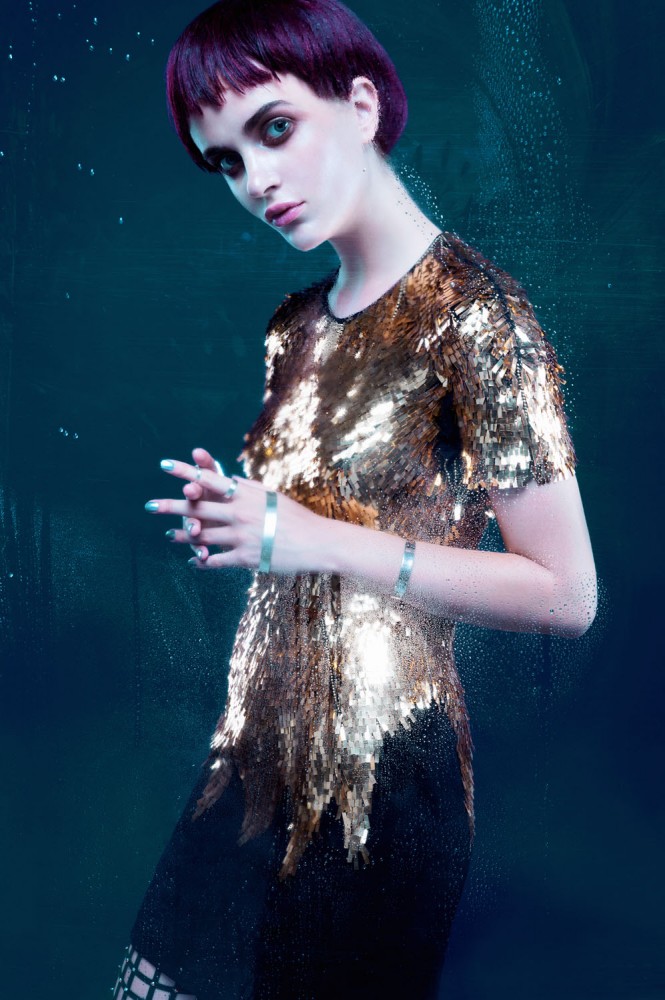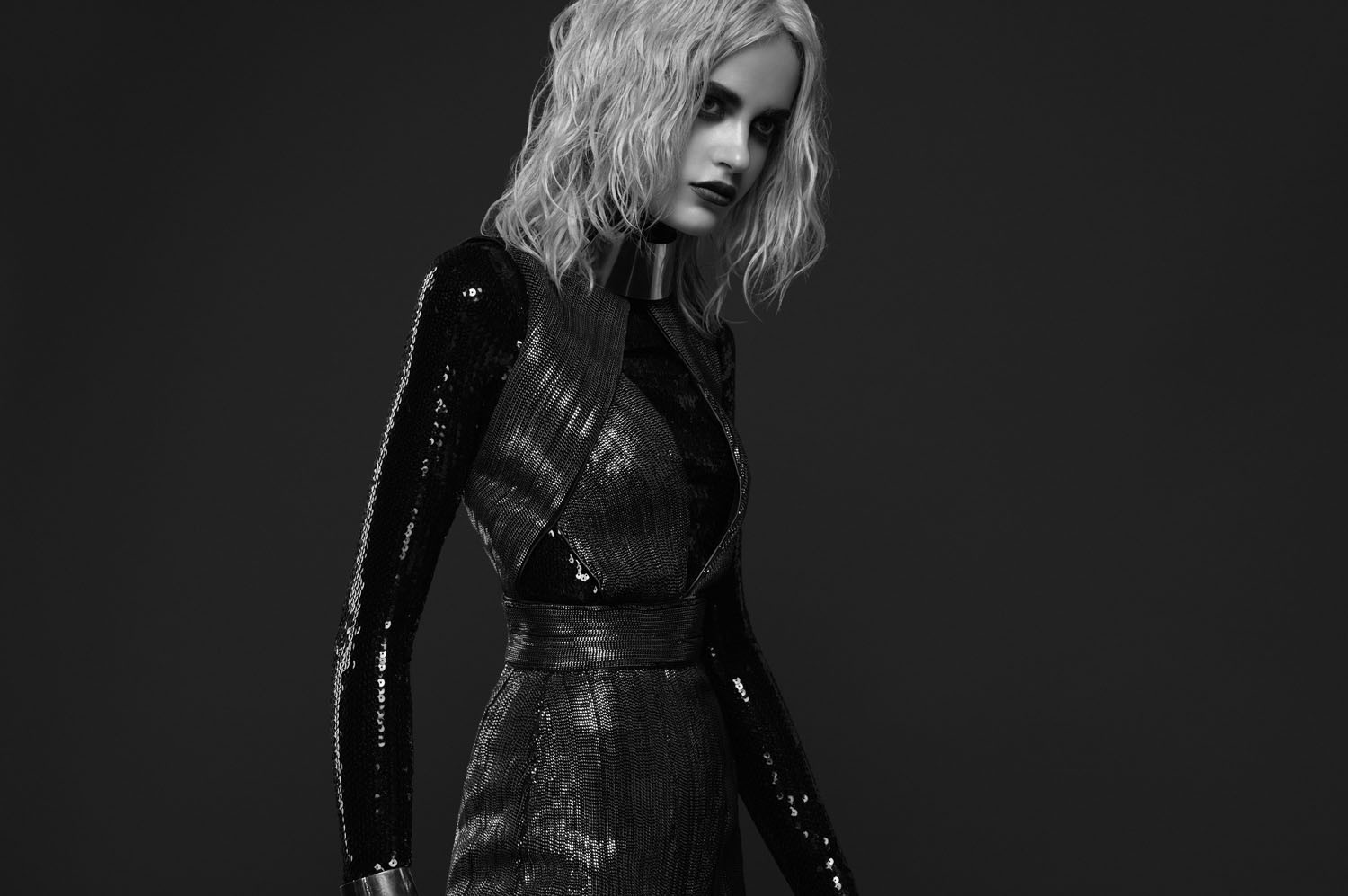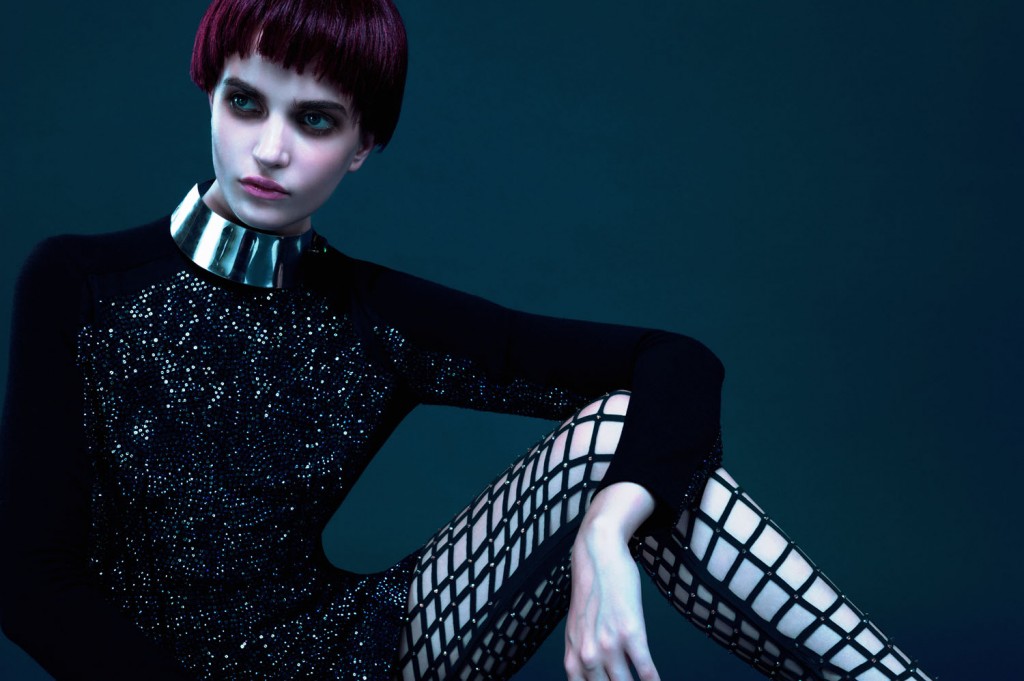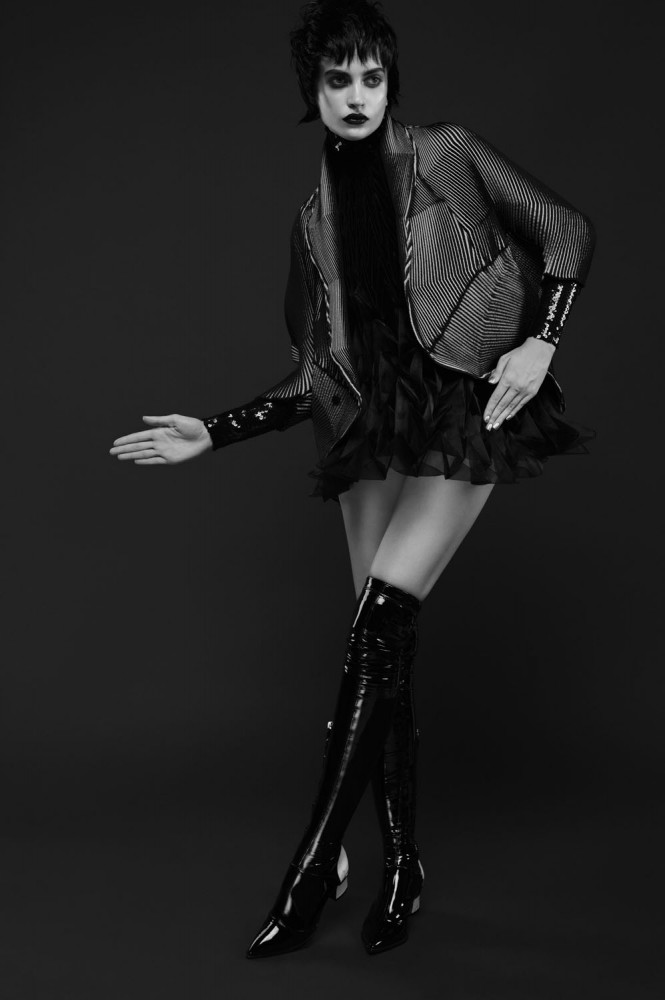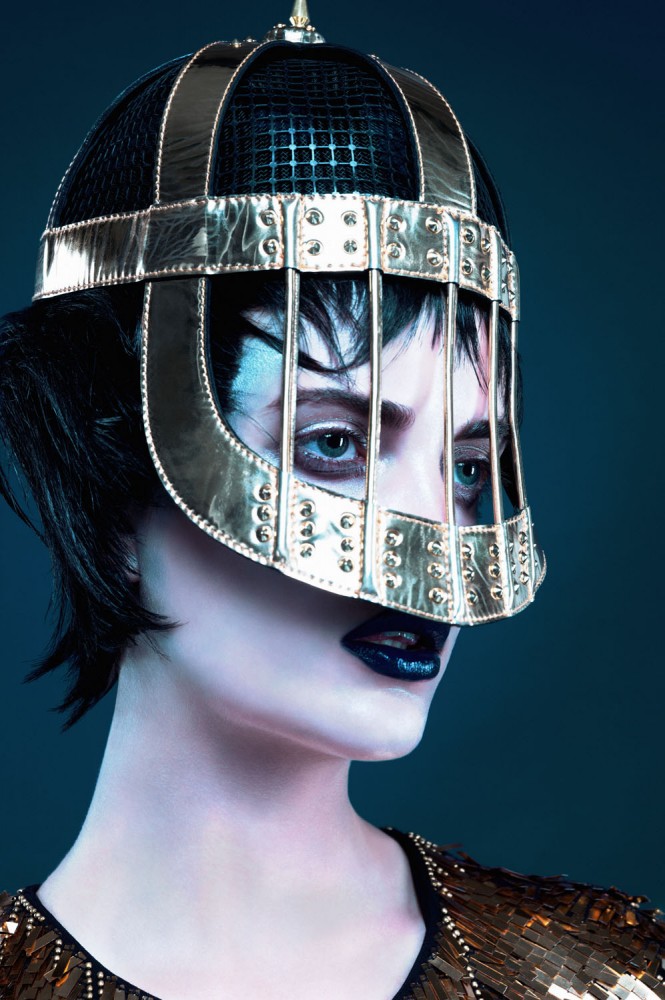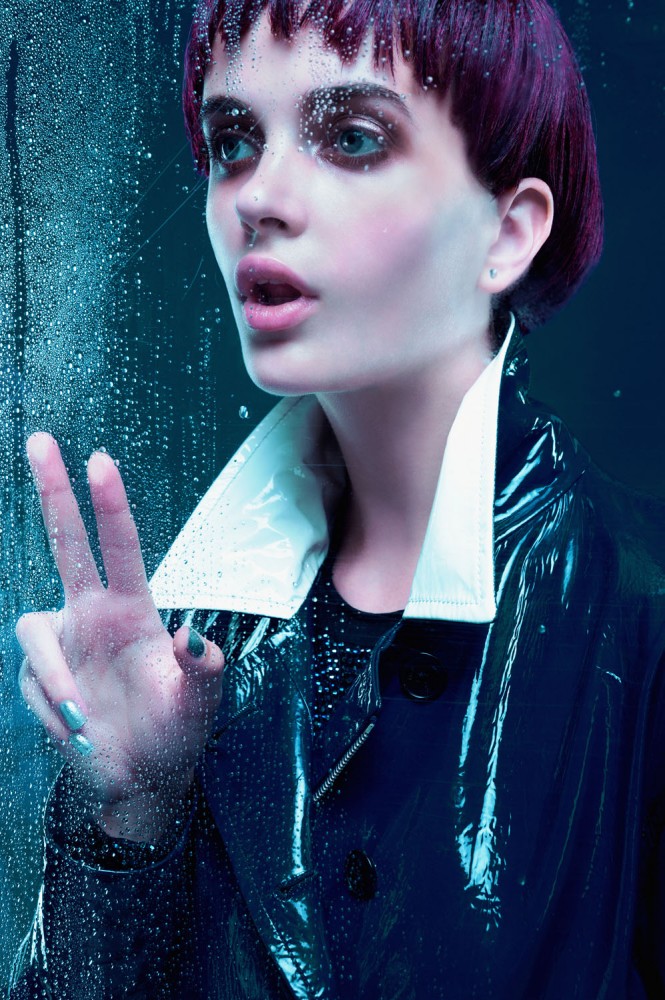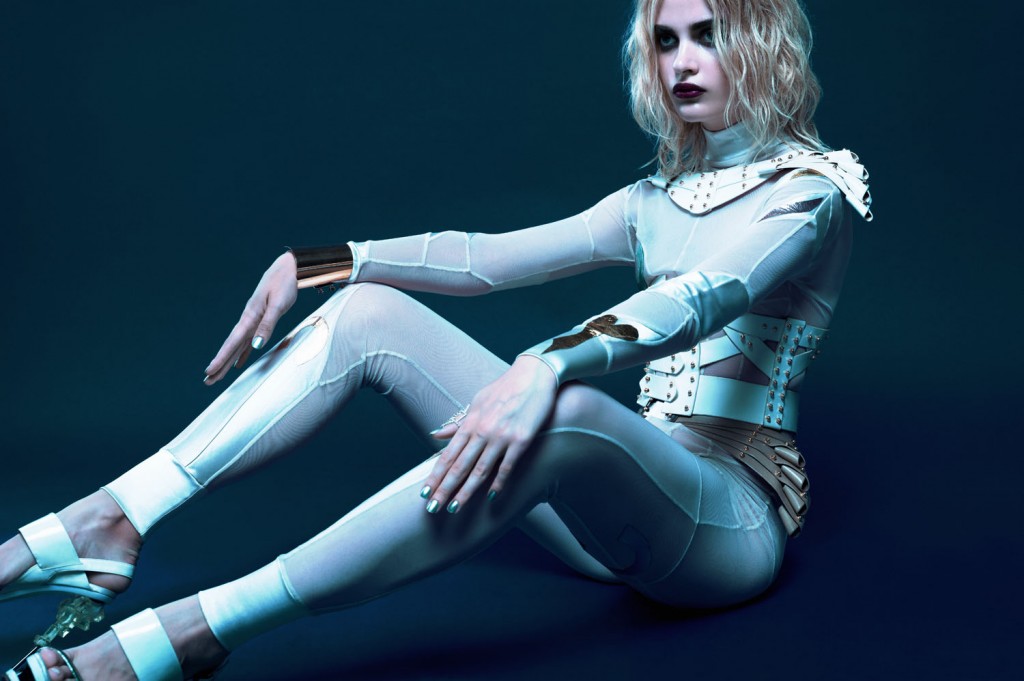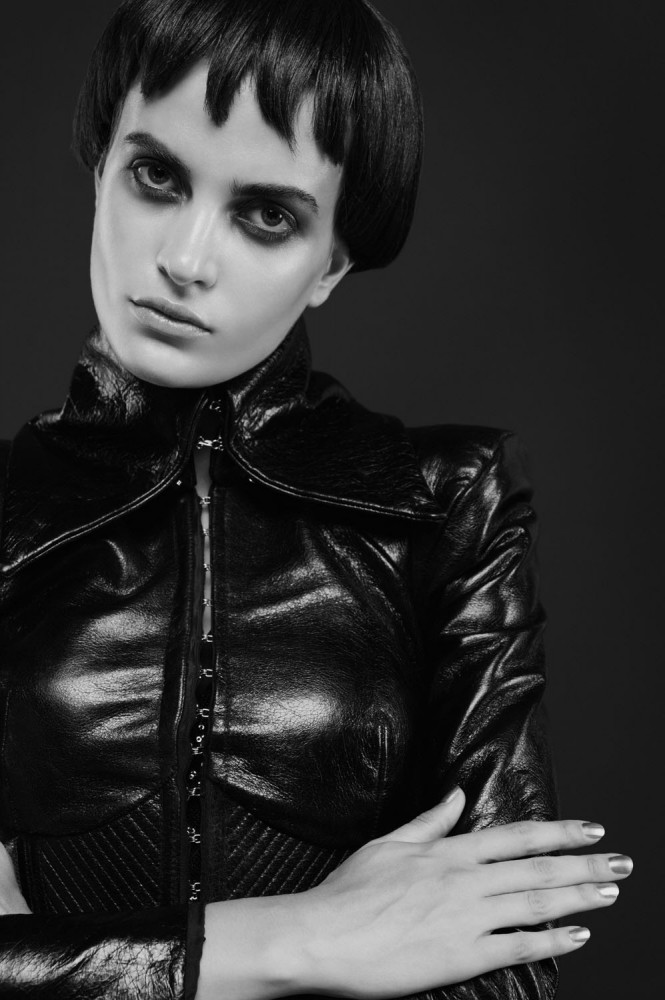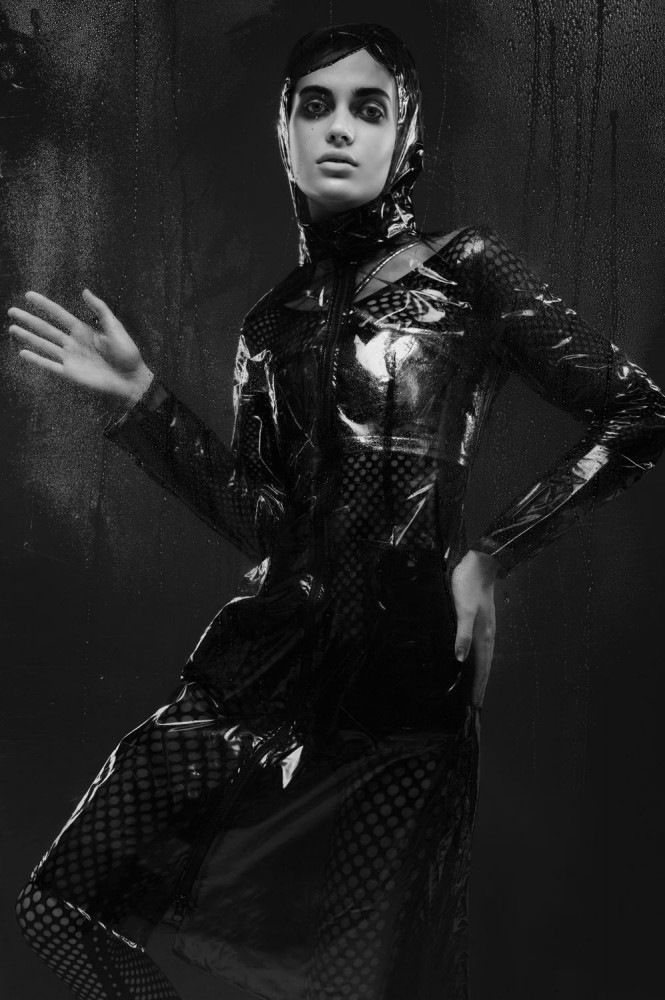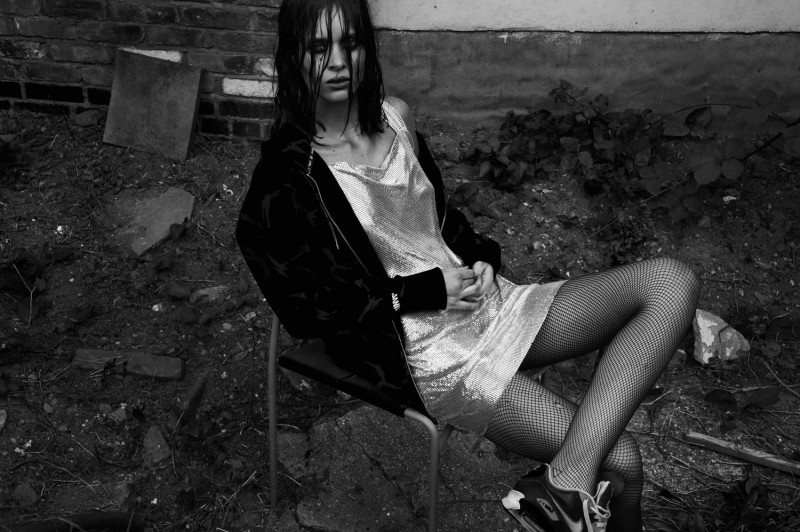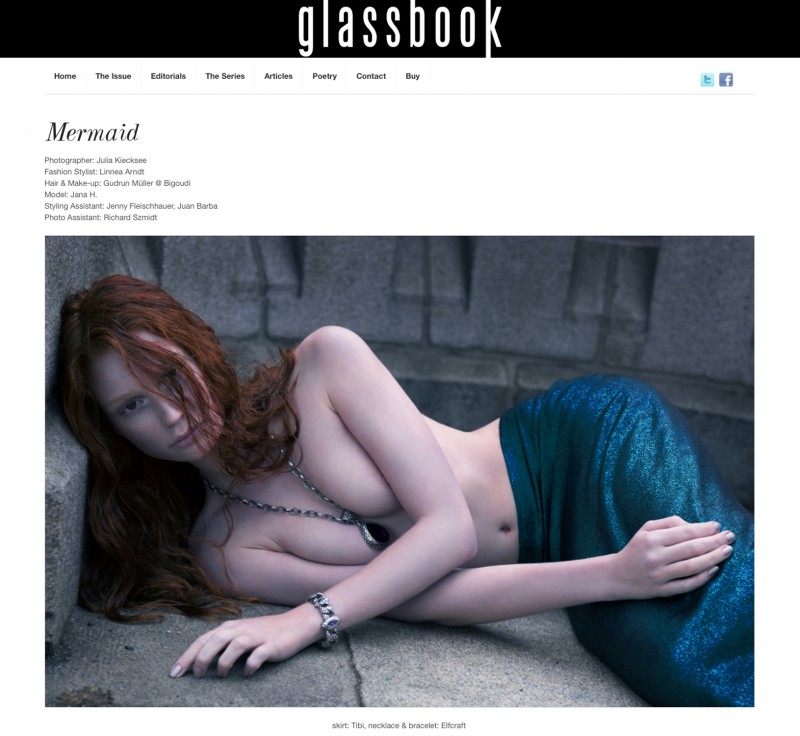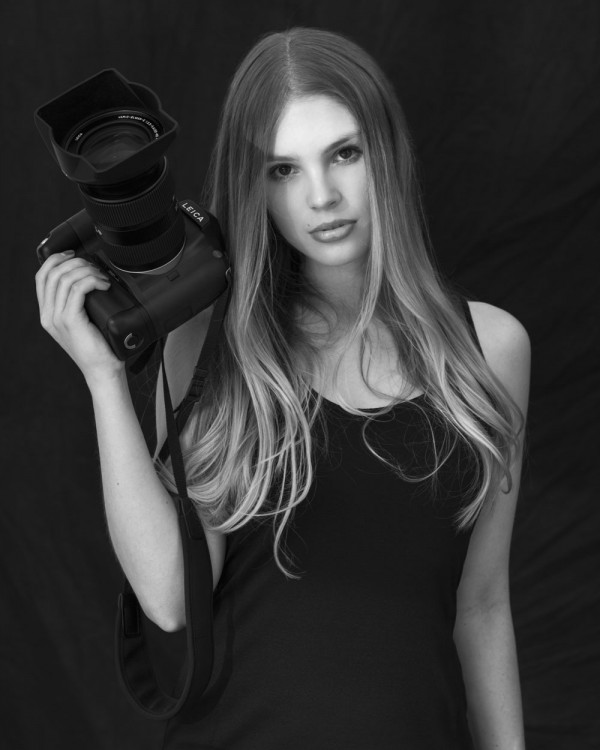Inspired by the Sci-Fi thriller Ex-Machina, photographer Julia Kiecksee's Robot series uses contrast-rich, black and white and powerful colour pictures, with futuristic, metallic-looking creations by stylist Alton Hetariki, to produce concepts based on the theme of Artificial Intelligence.
S Magazine: You've just completed your Bachelor Degree in Photography – what got you into this field?
Julia Kiecksee: That's correct. At the beginning of the year I finished my studies of Communication Design with a focus on Photography at the Hamburg University of Applied Sciences, under the aegis of Professor Ute Mahler. There was no definitive moment that prompted me to focus on photography; but I felt a desire to do so whenever I looked into magazines or saw photography campaigns.
Many photographers are autodidacts to begin with or work as assistants. Would you do the same or why did you choose to study? And would you like to work sometime somewhere as an assistant?
To be honest, I never had a real plan. It was clear to me that I had to go my own way. In that respect, I could also be seen as an autodidact. Two things matter most for one's development: to take photographs oneself, because in doing so you learn the most; to get feedback, as I did during my education. I learned how to develop film and spent a lot of time in the black and white laboratory. I worked as a photographer even before my courses began. It would be great to assist one of my idols, then I would be able to get insight into the business and see how it all works. I would hope to be able to do big campaigns myself or do articles for Italian Vogue perhaps, in the near future.
Who influenced you the most?
Steven Meisel. His creations are currently the craziest. The ideas he applies to the spreads are great. But I also could mention the imagery and imagination of Steven Klein, Richard Avedon and Irving Penn.
You are quite young, but have already developed your own style. How would you describe it?
I like black and white, as I consider it photography in its purest form. You concentrate on the things that really matter. Colour distracts you from the object and creates an atmosphere that is perhaps not wanted. I've been told that my photographs are rather sinister; but if you take a picture of a girl in a field of flowers in strong colours, the picture might convey something different to what you actually see. You somehow feel that something is wrong. You also won't find big, grinning smiles in my work.
Do you work with a given concept? How do you realize your ideas? Or do you work rather spontaneously, getting your inspiration at the photo shoot itself?
I usually work with a concept. First there's an idea, then I search for the mood in order to give the team an inkling about it, and then I write down the concept; but during the photo shoot I do leave room for spontaneity. You can't plan every picture. So I have an idea, but don't stick to it categorically. However, it can happen that one image is particularly important to me, and I try to realize it exactly as I imagine it. Because I like to travel – I've produced in Los Angeles, Paris, London, Warsaw and Milan – and because I don't always know my way around these cities like I would here in Hamburg, there are times when improvisation is the only way.
You do the post-production yourself. Why don't you have it done?
Post-production is essential for me. It's about giving the picture the final polish, so to speak. I usually have a very distinct idea of how the finished image should look. If I do the post-production myself, the results are 100 percent my own, and I know it's my work to the core and it pleases me. You don't get that if someone else does it.
One time I had to outsource some spreads, as I didn't have the time to do them myself. Sometimes I think I also could have done them myself, as corrections take as much time as retouching. I work very diligently and can spend up to 22 hours on a single shot. But it's clear to me that I can't go on like that, because my number of assignments is increasing steadily. The more you work, the more assignments you get. I'm in the process of searching for a post-producer who will work for me on a regular basis, so that I don't have to explain myself over and over again.
You said, you preferred black and white. How do you treat colour?
When I'm shooting, I try to make sure the colours harmonize – or that they don't. It's rather difficult to explain, as it's very subjective. I pay attention that the colours don't match each other too much, and that the motifs don't fade into the background. If there's room to change something I play with the controls and influence the colouring until I'm satisfied with the results. I get inspired by David Lachapelle or Mario Testino, who both use colouring to the extreme.
What is the idea behind Robot?
Robot revolves around artificial intelligence. I got the idea from the film Ex-Machina. It deals with the question of whether artificial intelligence can produce true emotions or not. Films and music are often my sources of inspiration. The movies A Clockwork Orange, The Shining, The Crow have been such sources, or books like Fifty Shades of Grey or the PJ Harvey songs Angelene and Down By The Water. I admire Stanley Kubrick’s films because he was a perfectionist like me; and music plays an important part in my life. I couldn't work without music.
The S Magazine emphasizes the photographer taking the creative lead. Did that work out well for you?
For sure. To be given the creative leave is probably the dream of every photographer! Though I do rely on my team as well. I usually show my selection to the stylist. Sometimes, if he or she isn't pleased, I can be talked into another picture; but our views usually concur.
You give a lot of thought to the technology – cameras, light and such. Why do you believe this is important?
I believe there is no end to learning and you always have to be up-to-date with the latest developments. I do like to experiment with different cameras. I prefer daylight, but like to work with Briese and Profoto. I experiment with different light settings now – but on a production I usually go back to my favourite light sets. The motif is more important to me than a gigantic light set that you might use just to create an effect. My defining point in not how the picture is produced, but what it says, how it touches you. The viewer should stay with the picture for more than just one second.
For the S Magazine you used the S and the Vario-Elmar-S 30-90 mm f/3.5-5.6 Apsh. What influence did the S have on your work?
I've become very used to the S – I simply love to work with it. Even the click of the shutter quietens me down. You push the shutter half-way, focus and then take the shot. In the meantime the model moves and there's this “in between moment”, that you wouldn't normally get. It feels more real somehow. I realize that working with the S has influenced my work immensely.
